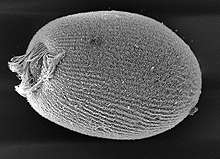Sponging up the evolutionary past

University of Queensland researchers are exploring the evolution of what has been termed the “Rosetta Stone” of the gene world, by tracing the development of the humble sea sponge.
A team led by Professor Bernie Degnan, from UQ's School of Integrative Biology, has found sea sponges don't have Hox genes – the genes responsible in flies, animals, and even humans, for where the head and bottom should go.
“Sea sponges are basically living fossils and haven't changed since before the Cambrian explosion – the time when most of the major groups of animals first appear,” Professor Degnan said.
“They are one of the simplest animals and yet their genome (their genetic information) is remarkably similar to our own.
“What we have found is as sponges don't have this gene, it must have evolved after sponges split from our evolutionary path, and it corresponds with a big jump in the rise of complex organisms.”
Professor Degnan said the research, published recently in the scientific journal Current Biology, adds another piece of the evolutionary puzzle to how life evolved on Earth.
“Sea sponges are fascinating animals and offer us a window into the past,” he said.
“But they are also showing us a window into the future as they are an immense source of bio-active compounds that could have pharmaceutical and industrial benefits.”
He said one example of potential benefit is being explored by looking at the way sponges develop a glass skeleton.
“They grow this ornate and intricate skeleton which is made out of glass,” he said.
“Their genome encodes the amazing ability to take silica out of sea water and turn it into glass, so we are looking at that for the future environmentally-benign bio-fabrication of glass.
“And other researchers are looking at the sponge for novel drug development.”
He said his team was continuing its research into sponges to further unlock the potential of such a simple yet amazing creature.
Source: University of Queensland















